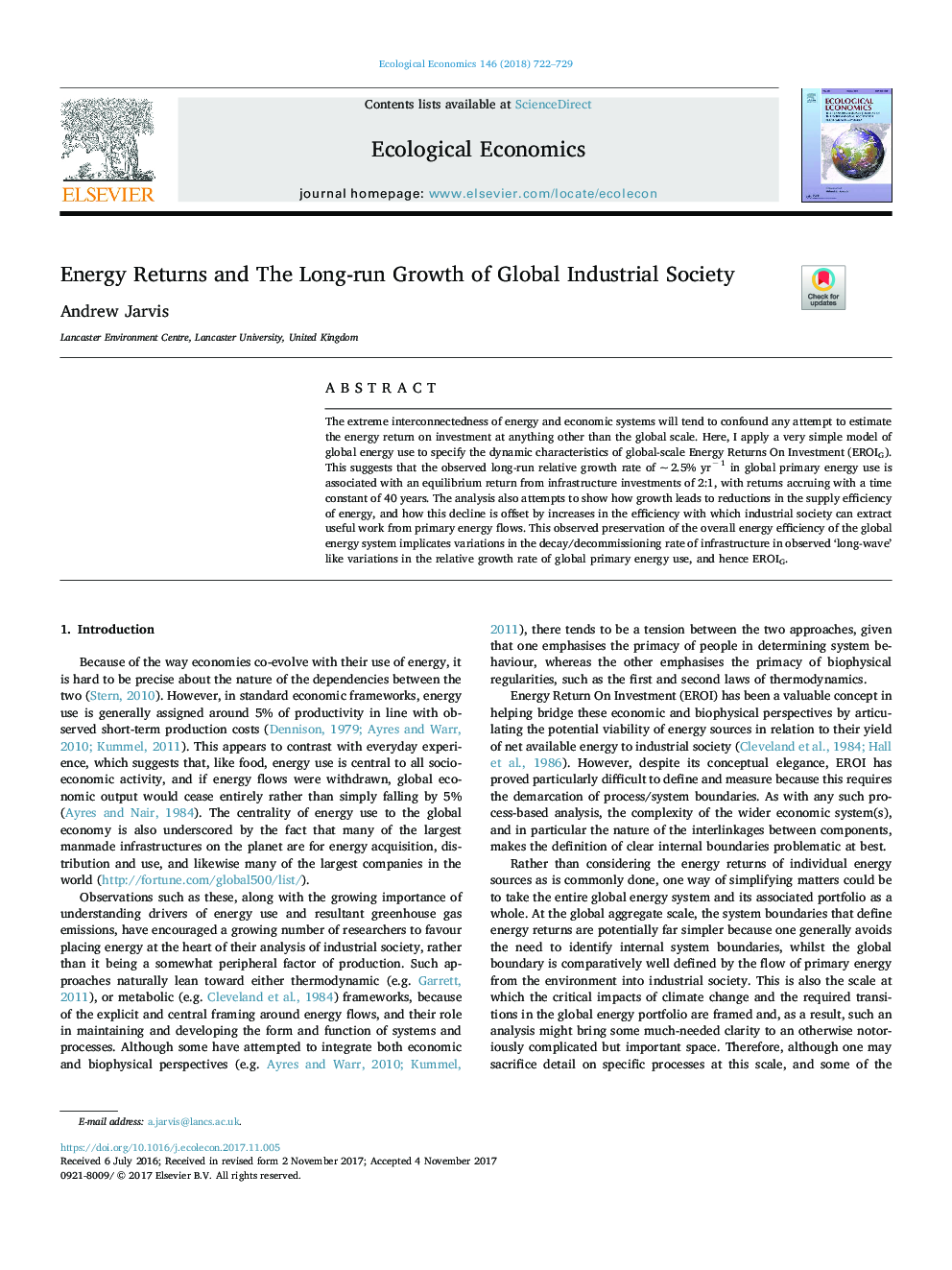| Article ID | Journal | Published Year | Pages | File Type |
|---|---|---|---|---|
| 7344634 | Ecological Economics | 2018 | 8 Pages |
Abstract
The extreme interconnectedness of energy and economic systems will tend to confound any attempt to estimate the energy return on investment at anything other than the global scale. Here, I apply a very simple model of global energy use to specify the dynamic characteristics of global-scale Energy Returns On Investment (EROIG). This suggests that the observed long-run relative growth rate of ~ 2.5% yrâ 1 in global primary energy use is associated with an equilibrium return from infrastructure investments of 2:1, with returns accruing with a time constant of 40 years. The analysis also attempts to show how growth leads to reductions in the supply efficiency of energy, and how this decline is offset by increases in the efficiency with which industrial society can extract useful work from primary energy flows. This observed preservation of the overall energy efficiency of the global energy system implicates variations in the decay/decommissioning rate of infrastructure in observed 'long-wave' like variations in the relative growth rate of global primary energy use, and hence EROIG.
Related Topics
Life Sciences
Agricultural and Biological Sciences
Ecology, Evolution, Behavior and Systematics
Authors
Andrew Jarvis,
